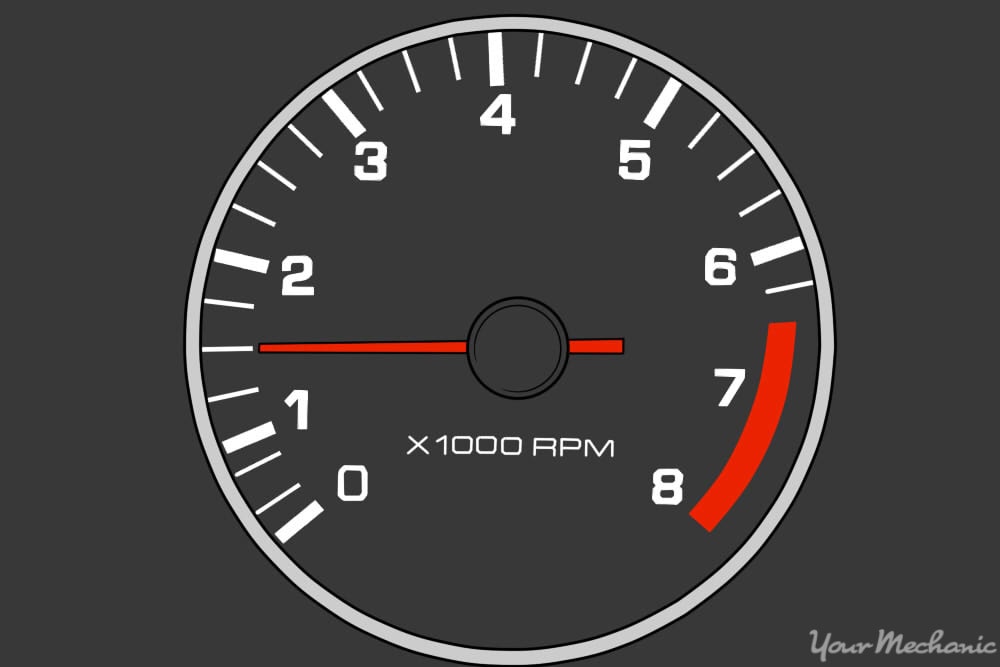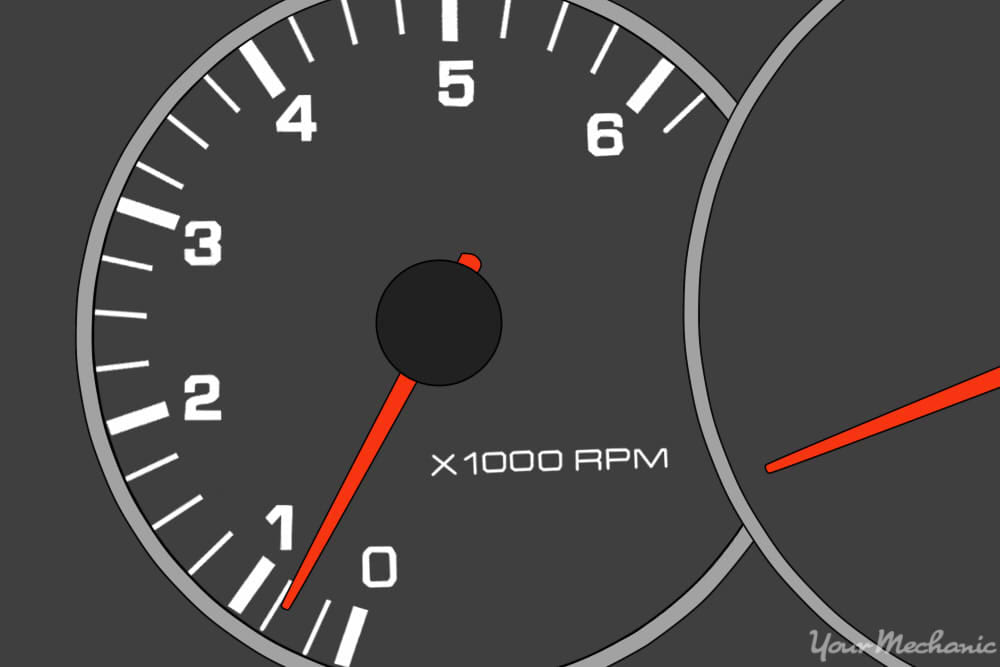Do you want to know what is the best RPM for your car engine? Are you looking for ways to optimize your car’s performance? If yes, then you have come to the right place. In this article, we will discuss the importance of RPM and how you can determine the optimum RPM for your car engine. We will explore the different types of RPM and how it affects your engine’s performance. We will also look into the factors you need to consider before deciding on the best RPM for your car. So, let’s get started!
The best RPM speed depends on the type of application you are using. For basic computing tasks, such as web browsing, word processing, and emailing, a speed of around 2,400 RPM is adequate. If you are doing more demanding tasks such as gaming or video editing, then speeds of 7,200 RPM or higher are recommended.
How Many RPM is Best?
RPM stands for Revolutions Per Minute and is the measure of how quickly a motor or engine is spinning. When it comes to choosing the right number of RPMs for a particular application, there are a few factors to consider. First, the type of motor or engine being used should be taken into account. Different types of motors and engines will have different optimal RPMs. Additionally, the size and weight of the item being powered by the motor or engine should also be taken into consideration. The bigger and heavier the item, the more RPMs it will require.
Factors to Consider
When determining the optimal RPM for an application, the type of motor or engine being used should be taken into account. Different types of motors and engines will have different optimal RPMs, so it’s important to research which type of motor or engine is best for the application before making a decision. Additionally, the size and weight of the item being powered by the motor or engine should also be taken into consideration. The bigger and heavier the item, the more RPMs it will require.
The environment in which the motor or engine will operate should also be taken into account when selecting the optimal RPM. Motors and engines that will be used in wet or corrosive environments may require lower RPMs than those used in dry, temperate environments. Additionally, the temperature of the environment should be taken into consideration when selecting the optimal RPM. Motors and engines that will be used in warmer climates will require higher RPMs than those used in cooler climates.
Power Source
The power source being used to power the motor or engine should also be taken into account. Motors and engines that will be powered by electricity will require different RPMs than those powered by internal combustion engines. Additionally, the voltage and current of the power source should also be taken into consideration. Motors and engines that will be powered by higher voltage or current will require higher RPMs than those powered by lower voltage or current.
The load being placed on the motor or engine should also be taken into account. Motors and engines that will be used to power heavy loads will require higher RPMs than those used to power lighter loads. Additionally, the speed of the application should also be taken into consideration. Motors and engines that will be used to power applications that require high speeds will require higher RPMs than those used to power applications that require lower speeds.
Calculating Optimal RPMs
Once all of the factors have been taken into account, the optimal RPMs for the application can be calculated. The calculations will vary depending on the type of motor or engine being used, the size and weight of the item being powered, the environment in which the motor or engine will operate, the power source being used, the load being placed on the motor or engine, and the speed of the application. It is important to use the proper calculations when determining the optimal RPMs for an application.
Testing RPMs
Once the optimal RPMs for an application have been calculated, the motor or engine should be tested to ensure that it is operating at the correct RPMs. Testing the motor or engine can be done using a variety of methods, such as using a tachometer or a stroboscope. It is important to ensure that the motor or engine is running at the optimal RPMs before it is used in the application.
Maintenance
It is also important to maintain the motor or engine to ensure that it is running at the optimal RPMs. Regular maintenance should be performed on the motor or engine to check for any signs of wear and tear and to keep it running in peak condition. Additionally, regular inspections should be done to ensure that the motor or engine is running at the optimal RPMs.
Safety Considerations
When operating a motor or engine, it is important to adhere to all safety considerations. Motors and engines that are operating at higher RPMs can be dangerous, so it is important to follow the manufacturer’s instructions and safety guidelines when operating them. Additionally, protective clothing and safety gear should be worn when operating a motor or engine at higher RPMs.
Adjusting RPMs
If needed, the RPMs of a motor or engine can be adjusted to meet the needs of the application. The method for adjusting the RPMs will vary depending on the type of motor or engine being used. Some motors and engines can be adjusted using dials or levers, while others will require more advanced techniques, such as using a computer to adjust the RPMs. It is important to follow the manufacturer’s instructions when adjusting the RPMs of a motor or engine.
Overclocking
In some cases, it may be necessary to “overclock” a motor or engine in order to increase its performance. Overclocking a motor or engine means running it at a higher RPM than it is designed for. This can be a dangerous practice, as it can cause the motor or engine to overheat, resulting in damage or even failure. It is important to adhere to the manufacturer’s instructions when overclocking a motor or engine.
Conclusion
When it comes to determining the optimal RPMs for a particular application, there are a few factors to consider, such as the type of motor or engine being used, the size and weight of the item being powered, the environment in which the motor or engine will operate, the power source being used, the load being placed on the motor or engine, and the speed of the application. Once all of these factors have been taken into account, the optimal RPMs for the application can be calculated. It is also important to test the motor or engine to ensure that it is operating at the correct RPMs, and to maintain the motor or engine to keep it running in peak condition. Finally, it is important to adhere to all safety considerations when operating a motor or engine at higher RPMs.
Frequently Asked Questions
What Does Rpm Mean?
Rpm stands for revolutions per minute. It is a measure used to describe the speed of rotating components such as motors, wheels, or fans. It is an important factor when considering how much power and torque a motor can produce.
Rpm is often used to measure the speed of a car’s engine or the speed of a fan. It can also be used to measure the torque of a motor or the speed at which a wheel is spinning. Rpm is an important factor in understanding the performance of a vehicle or machine.
What Is the Maximum Rpm?
The maximum rpm is determined by the specific motor or engine being used. It can vary from motor to motor and from engine to engine. Generally speaking, the higher the rpm, the more power and torque a motor can produce.
Most car engines can reach a maximum rpm of around 8,000 to 10,000 rpm. However, some performance engines can reach up to 15,000 rpm. The maximum rpm for a given motor or engine will depend on the specific design and its components.
What Is the Optimal Rpm?
The optimal rpm is the point at which the motor or engine produces the most power and torque. This point can vary depending on the specific design of the motor or engine, as well as the load it is under. Generally speaking, the optimal rpm is the highest rpm that the motor or engine can reach without causing damage.
For most car engines, the optimal rpm is usually around 5,000 to 7,000 rpm. It is important to note that the optimal rpm can change depending on the specific design of the motor or engine and the load it is under.
What Is the Difference Between Maximum and Optimal Rpm?
The maximum rpm is the highest rpm that the motor or engine can reach without causing damage. This is usually determined by the specific design of the motor or engine and its components.
The optimal rpm, on the other hand, is the point at which the motor or engine produces the most power and torque. This point can vary depending on the specific design of the motor or engine, as well as the load it is under. Generally speaking, the optimal rpm is the highest rpm that the motor or engine can reach without causing damage.
How Many Rpm is Best?
The best rpm for a given motor or engine depends on the specific design and its components. Generally speaking, the optimal rpm is the highest rpm that the motor or engine can reach without causing damage.
For most car engines, the optimal rpm is usually around 5,000 to 7,000 rpm. It is important to note that the optimal rpm can change depending on the specific design of the motor or engine and the load it is under. Therefore, it is important to consult the manufacturer’s specifications to determine the best rpm for a given motor or engine.
How Do Some Engines Rev To 9,000 RPM?
In conclusion, the best RPM for a given application will depend on the specific needs of the individual. Different applications require different RPMs, so it is important to do research and speak to professionals before making a decision. Ultimately, the best RPM will depend on the specific application in question.




